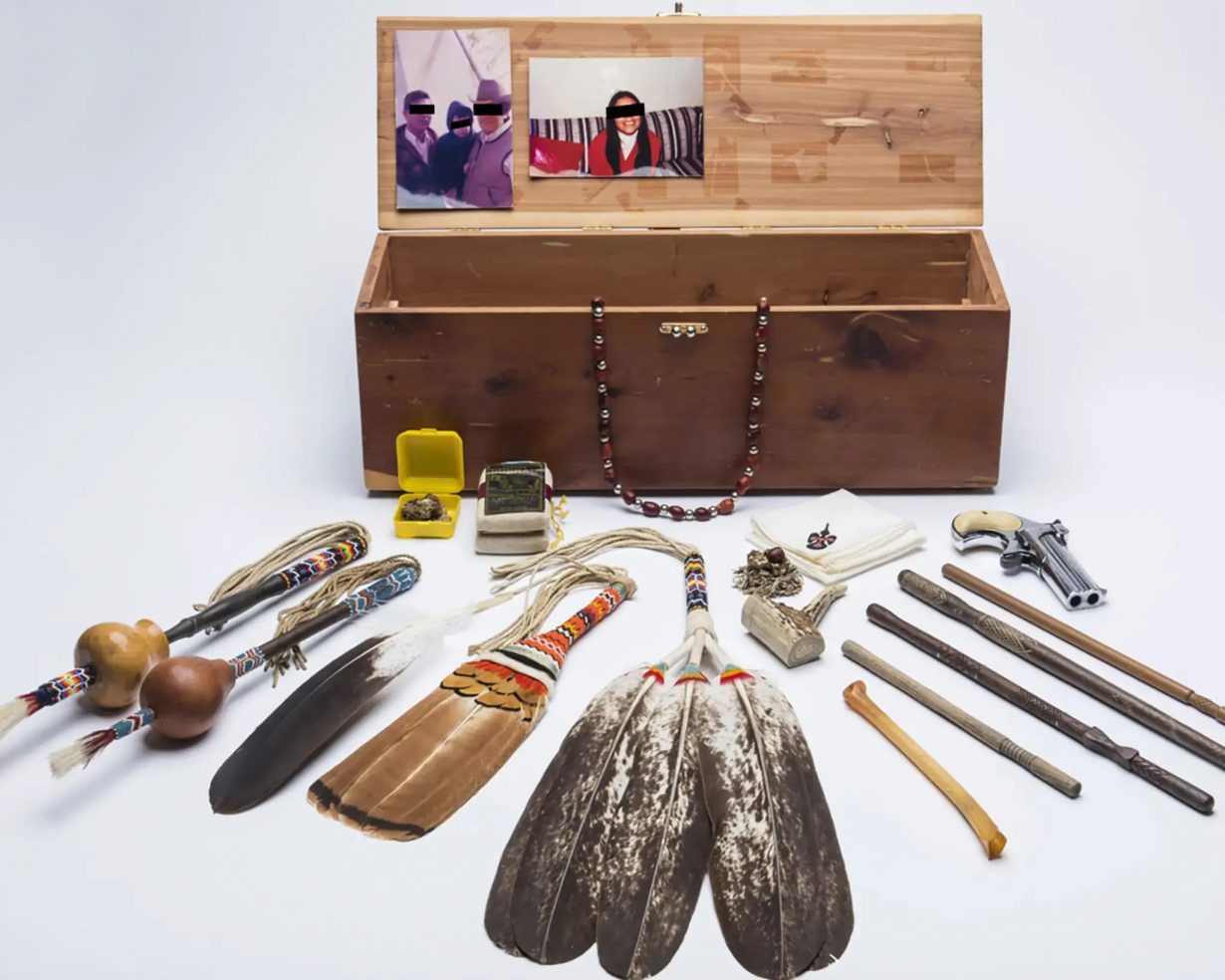A troublingly tranquil turn in a spate of recent shows favours comfort over confrontation
One day in early October, I encountered two installations, each consisting of a bed and a sound system. The first was in the sun-drenched fifth-floor apartment gallery Micki Meng, in a group show titled A friend, a thought, a tree, a ghost. The bed was hospitably made, its white sheets topped off with a set of towels and a shiny truffle. On the hardwood floor beside it was a small cylindrical speaker playing Maggie Lee’s 10-minute audio recording sleep talking (2024). “Set her off, off to the sea / Hmmhmhmhm”, Lee mumbled, her voice hoarse and breathy. “Ben, can you turn off the light please / Don’t you have to wake up early?” Looking out of the window of the I.M. Pei-designed building with my back to the bed, it was easy to imagine I was in a room with a layabout friend, sister, roommate or lover, living a fictional life in a modernist high-rise.
In the second gallery, island, located on the Bowery, visitors were asked to remove their shoes and invited to rest on large white futon mats enclosed in mosquito nets – part of a seven-channel sound installation in Hồng-Ân Trương’s solo show If you can hear the sound of my voice, clap once.Inside seven translucent cocoons, speakers played recordings of songs and testimonies Trương sourced from the archives of Bay Area anti-colonial movements of the 1960s and 70s, as well as from the sites of recent protests against the Israeli occupation and bombardment of Palestine. Seated with my eyes closed, I heard a call-and-response: “Where you go I will go / Where you go I will go / Your people are my people / Your people are my people”. I pictured an open window overlooking a demonstration on the street below; when I opened my eyes, the dim and tranquil gallery space stood in sharp contrast to all the urgent sounds coming from elsewhere.

I didn’t fully grasp what troubled me about these shows until later in the month, after I attended ‘Re-visioning Native Histories’, the first session of an annual themed forum at the New School’s Vera List Center for Art and Politics. That night, artists Kent Monkman and Nathan Young spoke about their work in what was billed as a conversation – between whom it wasn’t clear – and ended up being two slide presentations and a moderated round of questions-and-answers. First, Monkman described how he created his alter ego, Miss Chief Eagle Testickle – a stilettoed provocateur who appears in his parodic history paintings among white politicians and settlers – in response to the nineteenth-century painter George Catlin’s excessive and obsessive portrayals of Native people. What struck me about Monkman’s institutionally sanctioned critique, which drew chuckles from an audience of professor-types snacking on crabcakes and cheese, was his slippery use of direct address – the conspicuous presence of an unspecific ‘you’. He would say, for instance, ‘You need us for your future because our knowledge of this continent […] is what you’re missing.’ Those in the audience were the accused, but the monological format of the talk made it possible for Monkman’s arguments to be absorbed and assimilated without an admission of antagonism from either speaker or listener.
Young’s talk focused on a sound installation of his titled nkwiluntàmën: I long for it; I am lonesome for it (such as the sound of a drum) (2023), on longterm view in the grounds of Pennsbury Manor, the estate of William Penn, founder of the state of Pennsylvania. During his presentation, Young played an audio sample of the work, filling the reception hall with dissonant strings, airy harmonics, strained breath, syllabic utterances, a pulsing drumbeat and hints of synthesizer and marimba. The layered sounds gestured to the abundance of culture that could have existed in the American northeast had it not been for the forced displacement of Indigenous groups such as the Delaware Tribe of Indians, of which Young is a member. Created to start conversations, here, these sounds took the place of speech.

It occurred to me then that what I’d wanted was not to be awash in the seductive ambiguity of recorded sound but to be privy to a discussion in situ. Thinking back a few years, I recall a series of heady Vera List Center seminars titled ‘As for Protocols – To Hold Things Together’. Convening online during the height of the Covid pandemic, panellists deliberated with one another from their homes about economic infrastructures and art as social practice. Speaking toward each other rather than toward an audience, their halting, extemporaneous and often bone-tired discussions harboured a sense of candid presence, a sense that they were, together, stumbling forward in fits and starts. In light of this memory, the talk at hand felt too comfortable, like an art gallery with a bed in it. Jenny Wu
